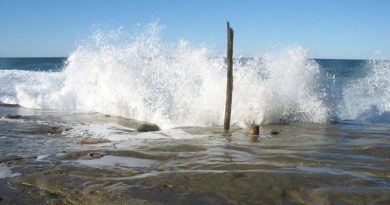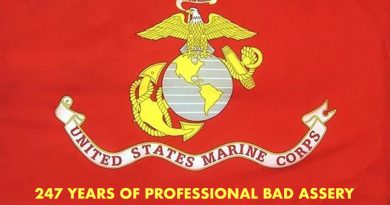John Glenn is an American Hero
On February 20, 1962 the first grade classroom where I was sitting with about 30 other children, stopped around 8:30 in the morning as we waited patiently in front of a black and white television at the front of the room. Astronaut and Marine Corps Major John Glenn was about to blast off from Cape Canaveral in Florida. This was a big moment in our young lives, as well as that of every American able to comprehend what was happening on that launch pad.

Glenn successfully made it into space where he orbited the Earth three times before coming back to splash down where the Atlantic Ocean meets the Caribbean Sea, just off the islands of the Turks and Caicos and the Dominican Republic, about five hours later. We watched that as well. Years later I would learn of the problems of the flight, most notably an indicator that wasn’t working properly. It indicated there was something wrong with his ship, Friendship 7, specifically the heat shield that was to blunt the extreme heat of re-entry. As it turned out the indicator was faulty and the heat shield was fine.
That’s how millions of kids in America first learned of Major John Glenn — Astronaut and U.S. Marine Corps Aviator. He was a true American hero, a guy with the “Right Stuff,” as Tom Wolfe so aptly put it in his book of the same name. John Glenn did what no other American had done and that was monumental, bigger than Alan Shepherd and Gus Grissom going into space. John Glenn became America’s hero. He was standing on the stage with President John Kennedy a few days after his flight and the entire nation stood with him as the president bestowed honors upon the astronaut. It’s quite possible every six-year old kid wanted to be John Glenn at that moment, going into space and being one of the new generation of explorers.
Although the space flights after Glenn’s were big deals and everyone watched them on TV whenever possible, none drew the imagination of Americans like Glenn’s flight — until Apollo 11 when Neal Armstrong became the first human to set foot on our moon.

Top: Vought F4U Corsair;
Bottom: North American F-86 Sabre
Before that Glenn flew combat mission in the Pacific Theater against the Japanese in World War II. He then flew missions against the North Koreans and Chinese during the Korean War, flying first the F4U-4 Corsair, similar to the ones featured in the TV show Baa Baa Black Sheep (starring Robert Conrad, Dana Elcar and John Larroquette among others) and then during the Korean War, the F9F Panther. His wingman for a time was baseball Hall-of-Famer Ted Williams. Glen also flew the F86F Sabre that he named the “MIG Mad Marine.”
He did the usual (to use that term loosely as there was nothing “usual” about it) Navy test pilot training and then moved on to the space program where he was narrowly picked to be one of the seven Mercury Astronauts, the first Americans to fly into space.
Glenn’s biggest impact on America wasn’t his first space flight (he had a second in 1998). Glen became a U.S. Senator from Ohio and served for the next 24 years.
A good Christian (Presbyterian) he saw no issues with recognizing science as fact and his belief in a supernatural deity. His trust and faith in science as well as his religion was a welcome voice in a political system that was being muddled with ancient beliefs in supernatural mythology.
During his tenure in the U.S. Senate Glenn was caught up in the Lincoln Savings and Keating Five scandals, after receiving $200k dollars from Charles Keating, the banker who bilked his customers out of millions of dollars. The Senate exonerated Glenn, who represented Ohio, and Senator John McCain of Arizona, saying they had exhibited “poor judgment” in the affair.

Other than the Keating Five scandal, Senator John Glenn has an exemplary record as a public servant.
He was twice considered a vice presidential running mate, 1976 (with Jimmy Carter) and then in 1988 (with Michael Dukakis).
He went back into space one more time in 1998 on STS-95, at the tender age of 77, to do some research on aging. Critics called it a publicity stunt, but Glenn insisted there was a scientific need for the research conducted on the Discovery space shuttle. Glenn was disappointed NASA never followed up with more research on aging in space.
It would have had practical use too, considering NASA and some private entities are planning a trip to Mars, which at the closest the two planets get to each other, is 33.9 million miles. It would take, at the very least, several months for a manned space mission to make the trip.
Despite his career in the Senate and his work promoting science and space travel, what so many of us remember him for is the lift off from Florida, almost 55 years ago.
John Glenn was the epitome of America, a hero with the Right Stuff who brought great optimism to our nation. America was the greatest because we had John Glenn on our side.

With any luck that stuff that rubbed off on America after he returned to Earth is still with us, maybe just little bits, as we head off into the future.
U.S. Marine Corps Lt. Col. John Glenn (ret), U.S. Astronaut (ret) and U.S. Senator from Ohio (ret), America’s hero, in perpetuum — July 18, 1921-December 8, 2016.
He is survived by his wife Annie, his two children and their grandchildren.
Semper Fidelis John Glenn.
Photos by Wikipedia
top photo: Senator John Glenn imposed on a
photo he took from his historic flight in 1962

Tim Forkes started as a writer on a small alternative newspaper in Milwaukee called the Crazy Shepherd. Writing about entertainment, he had the opportunity to speak with many people in show business, from the very famous to the people struggling to find an audience. In 1992 Tim moved to San Diego, CA and pursued other interests, but remained a freelance writer. Upon arrival in Southern California he was struck by how the elected government officials and business were so intertwined, far more so than he had witnessed in Wisconsin. His interest in entertainment began to wane and the business of politics took its place. He had always been interested in politics, his mother had been a Democratic Party official in Milwaukee, WI, so he sat down to dinner with many of Wisconsin’s greatest political names of the 20th Century: William Proxmire and Clem Zablocki chief among them. As a Marine Corps veteran, Tim has a great interest in veteran affairs, primarily as they relate to the men and women serving and their families. As far as Tim is concerned, the military-industrial complex has enough support. How the men and women who serve are treated is reprehensible, while in the military and especially once they become veterans. Tim would like to help change that.



